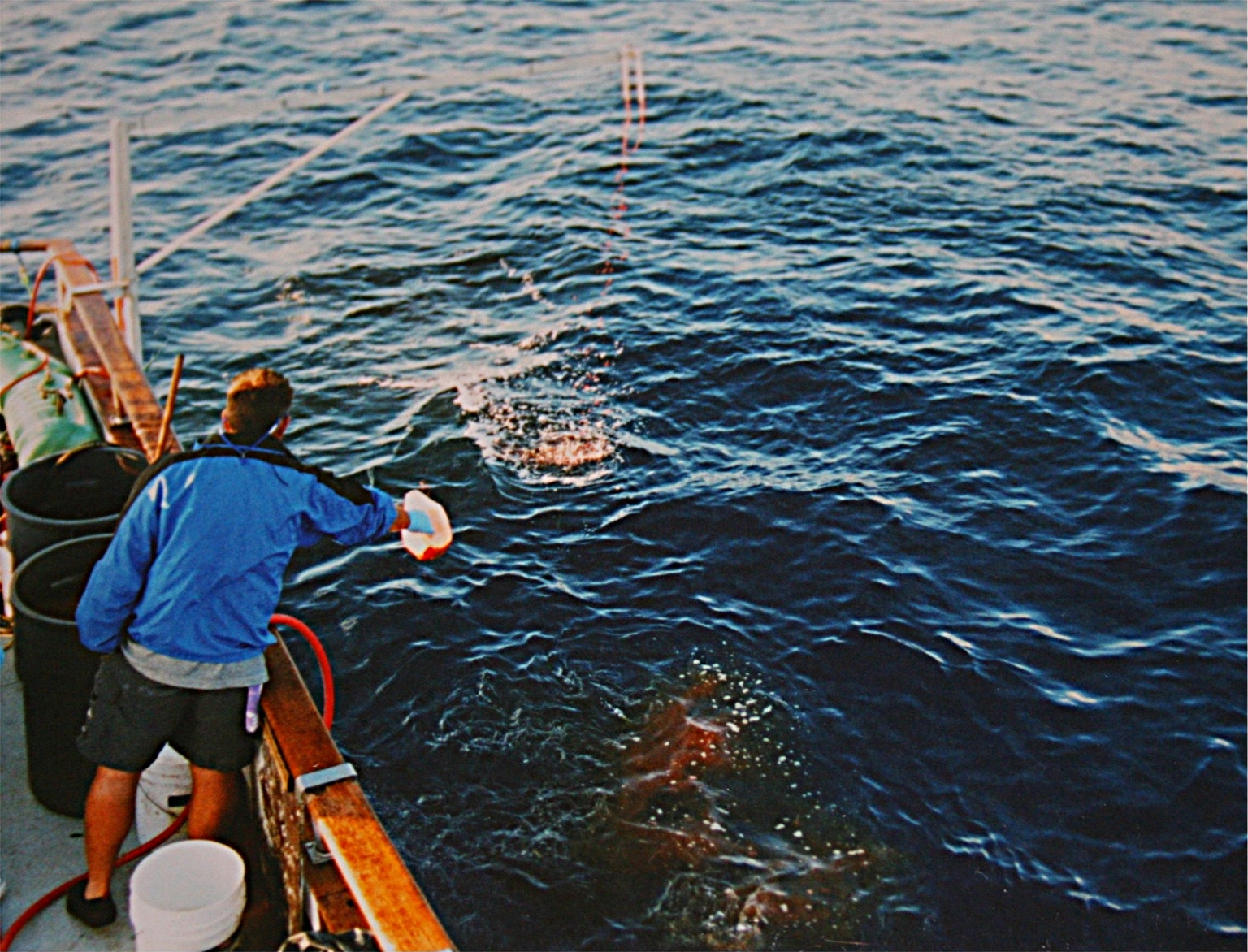Rubby Dubby on:
[Wikipedia]
[Google]
[Amazon]
 Chumming (
Chumming (
 Chumming (
Chumming (American English
American English, sometimes called United States English or U.S. English, is the set of variety (linguistics), varieties of the English language native to the United States. English is the Languages of the United States, most widely spoken lan ...
from Powhatan) is the blue water fishing practice of throwing meat
Meat is animal flesh that is eaten as food. Humans have hunted, farmed, and scavenged animals for meat since prehistoric times. The establishment of settlements in the Neolithic Revolution allowed the domestication of animals such as chic ...
-based groundbait called "chum" into the water in order to lure various marine animals (usually large game fish) to a designated fishing ground, so the target animals are more easily caught by hooking or spearing. Chums typically consist of fresh chunks of fish meat with bone and blood, the scent of which attracts predatory fish, particularly sharks, billfishes, tunas and groupers. In the past, the chum contents have also been made from " offal", the otherwise rejected or unwanted parts of slaughtered animals such as internal organs.
In Australia and New Zealand, chum is referred to as ''burley'', ''berley'' or ''berleying''. In the United Kingdom, it is also known as ''rubby dubby'' ( West Country and Yorkshire), ''shirvey'' or ''chirvey'' (Guernsey
Guernsey (; Guernésiais: ''Guernési''; french: Guernesey) is an island in the English Channel off the coast of Normandy that is part of the Bailiwick of Guernsey, a British Crown Dependency.
It is the second largest of the Channel Islands ...
, Channel Islands), and ''bait balls''.
Chumming is a common practice seen as effective by fishermen all over the world, typically in open oceans. Multiple forms of chum are available and used by anglers. Bunker consists of fish parts with a fish-enticing aroma. Stink bait contains oily fish parts and blood that releases the scent of dead fish into the water. Sour grain is a commonly used form of chum bait when fishing for catfish in inland waters of the Southern United States.
Native Americans used two methods of chumming. First, they would lie alongside a grasshopper
Grasshoppers are a group of insects belonging to the suborder Caelifera. They are among what is possibly the most ancient living group of chewing herbivorous insects, dating back to the early Triassic around 250 million years ago.
Grasshopp ...
and encourage it to jump into a flowing stream where the fish would consume the grasshopper. The Native Americans would then bait their hook with a grasshopper and hence catch the fish. Additionally, indigenous people would tie a dead animal from a tree above a stream encouraging flies to lay eggs. After weeks, the eggs became maggots and fell into the water, bringing a concentration of fish into the area.
Chumming is illegal in some parts of the world (such as in the U.S. state of Alabama) because of the danger it can pose by conditioning Conditioning may refer to:
Science, computing, and technology
* Air conditioning, the removal of heat from indoor air for thermal comfort
** Automobile air conditioning, air conditioning in a vehicle
** Ice storage air conditioning, air condition ...
sharks to associate feeding with human presence. Floridan restrictions for chumming include local laws in saltwater areas. Due to the vast barren sandy bottom structure around most of the state using chum is a necessity and common practice. The Florida Fish and Wildlife Conservation Commission (FWC) approved changes to shark fishing regulations, including prohibiting chumming when fishing for any species from the beach. The new ruling went into effect July 1, 2019.
See also
*Chum box
A chumbox or chumbucket is a form of online advertising that uses a grid of thumbnails and captions to drive traffic to other sites and webpages. This form of advertising is often associated with low quality clickbait links and articles. The term ...
, a form of internet advertising whose name is derived from the term.
* Groundbait, a means of "appetizer" baiting used in freshwater or coarse fishing.
References
Hunting methods Recreational fishing {{fishing-stub